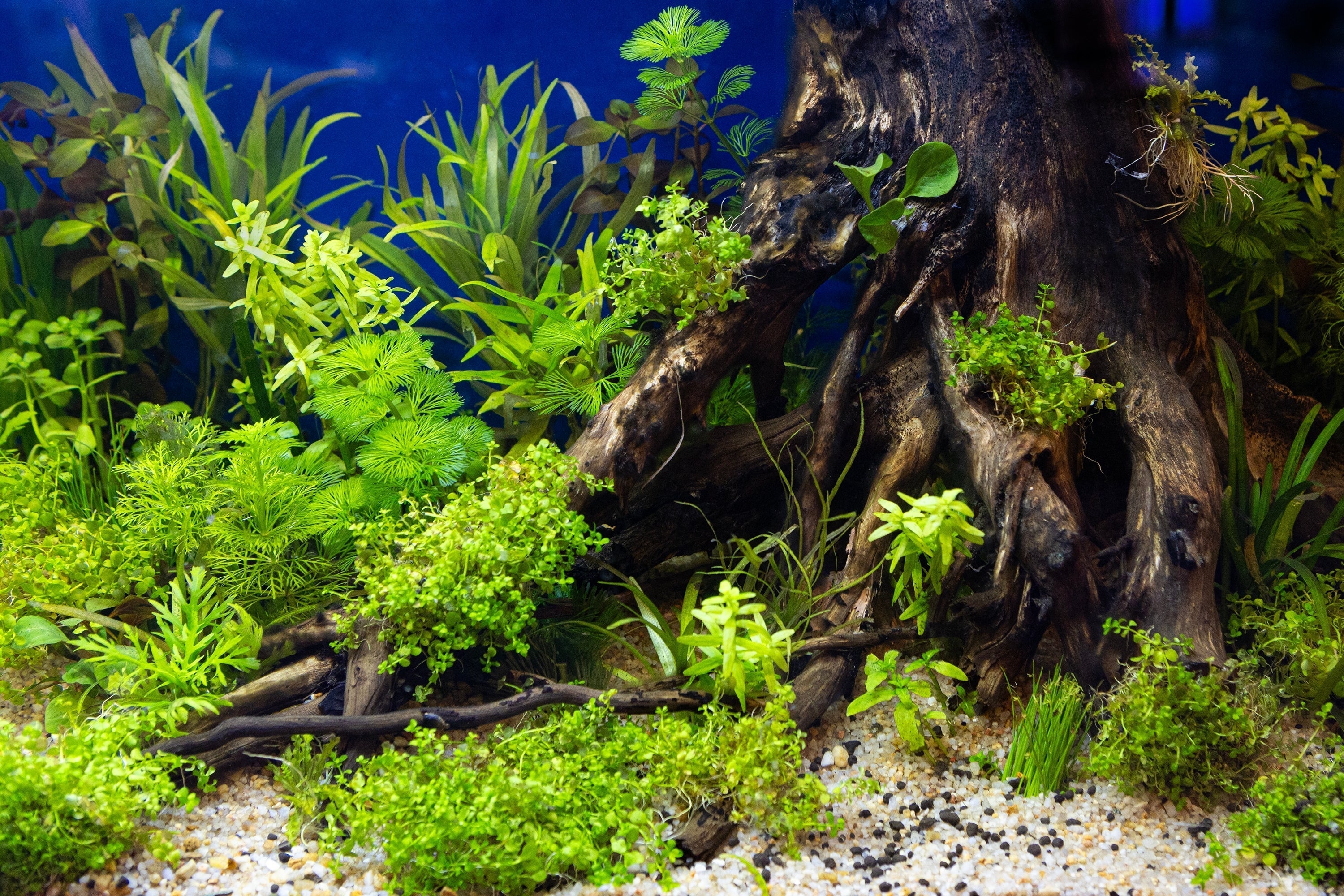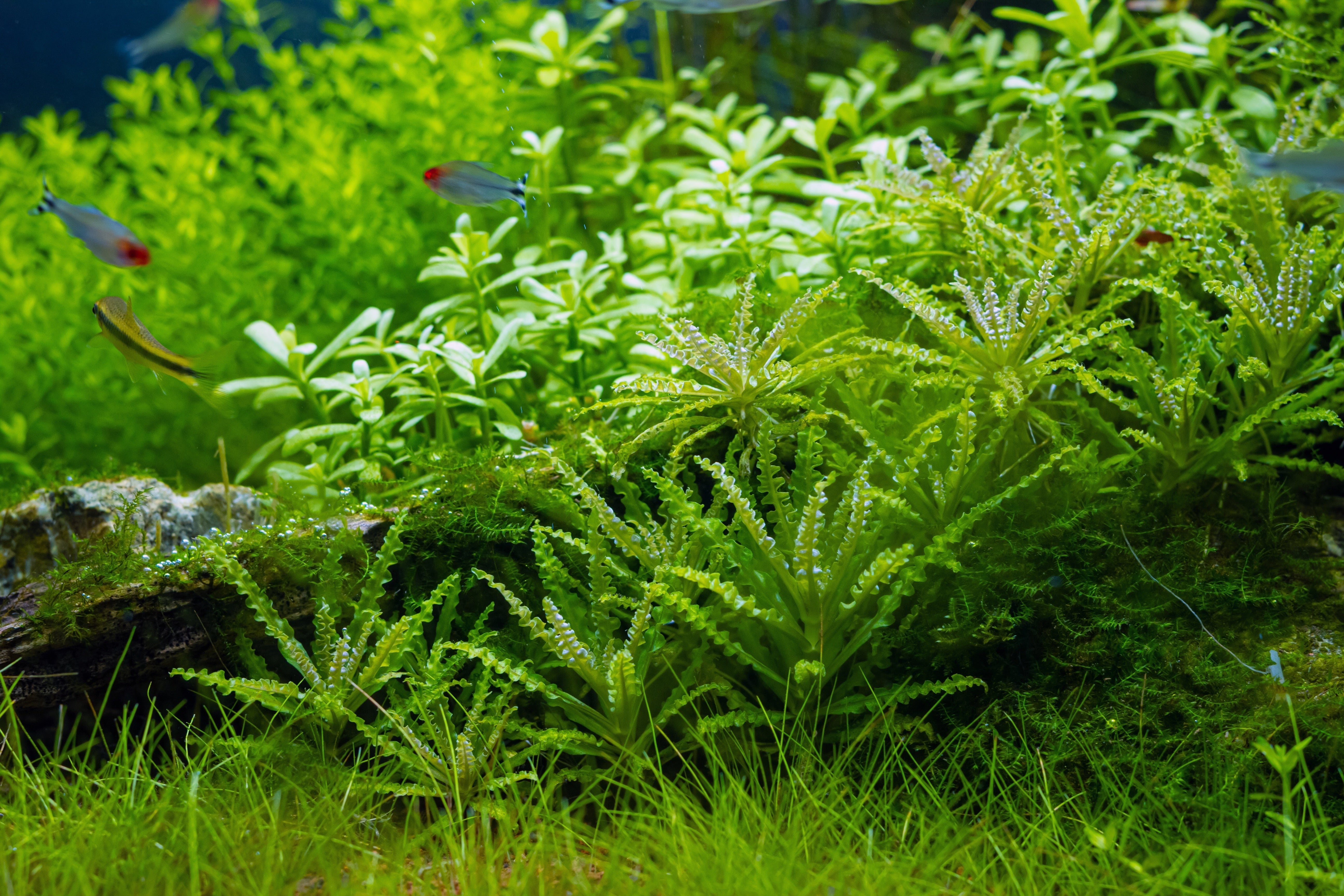Table of Contents
Neocaridina shrimp are popular among other similar species. With a diversity in varieties and hardy and easy-going temperament as they are, it is not hard to imagine these shrimp are always at the top search of many aquarists.
Neocaridina Shrimp Overview
Neocaridina shrimp (common name: Neocaridina davidi) are freshwater shrimp, originated in Taiwan. Interestingly, while the wild specimens possess a natural green-brownish coloration, many found in the aquarium market nowadays do not. Thanks to selective breeding, you may easily find one “dressing” red Sakura Red Cherry Shrimp (Neocaridina heteropoda var ‘red’), while another is yellow, Yellow Goldenback Shrimp (Neocaridina davidi var ‘yellow’), or blue like Blue Velvet Shrimp (Neocaridina davidi var ‘blue’), violet, “ghost”, or even a mixture of the erythrophores (red/orange), or iridophores (blue), or melanophores (black/brown).
Despite being known for their hardiness, easy-to-keep species, many fishkeepers often encounter certain issues while raising Neocaridina. In this article, we answer frequently asked questions about this shrimp and hope you can sort out some helpful tips for yourself.

Image of Red Cherry Shrimp
Where do Neocaridina shrimp come from?
Most agreed that Neocaridina comes from Asia, where its freshwater rivers, streams, and ponds are usually filled with plenty of aquatic plants and rocks. That said, almost all the species available in the aquarium trade are captive-bred.
How are Neocaridina Shrimp best kept in the aquarium?
Neocaridina shrimp are fond of heavily planted tanks. In order to create that condition, you can consider using aquarium Moss such as Java moss, Christmas Moss, Marimo Moss Balls, Baby Tears, Green Cabomba, and Cladophora algae. They not only make your shrimp feel comfortable but also are solid companies to balance and maintain the water in a clean condition as well. Adding driftwood is also a good choice as the algae, which your shrimp usually feed on, is commonly found thereon.
For their optimal growth, it is highly recommended to keep the shrimp in a group of at least six. They are schooling creatures, so they would love to enjoy swimming together.
Is there a minimum tank size?
Technically, the answer is yes. Neocaridina shrimp are relatively small in terms of body (average adult size of 1.5 inches). They are also not too voracious to produce a huge bioload. Hence, a 5-gallon tank will work well for a small group, and a 20-gallon tank couldn’t be more perfect for a colony.
Nonetheless, it is good if you can invest in a large aquarium at the beginning. Many things need to be cared for besides the shrimp’s bioload and body size. For example, it would be easier for you to monitor the water temperature and parameters in a bigger tank, or in case you want to keep more fish, you already have room for them. Further, Neocaridina breed quickly, so a large tank ensures space for their young.
What sort of water conditions do Neocaridina need?
Although these shrimp can tolerate a wide range of water conditions, it would be better for them if these conditions remain stable. Neocaridina thrive to their best at the following:
- Temperature: 65o - 80oF (~ 18.3o - 26.6oC)
- pH: 6.4 – 8.0
- kH: 0 – 10
- gH: 4 - 14
- TDS: 150 - 300
At Splashy Fish, our Neocaridina shrimp for sale are kept at:
- pH: 7.5
- kH: 0 – 10
- gH: 4 - 14
- TDS: 200 - 300 (once the TDS reaches nearly 300, we would do a partial water change with RODI water)
Fun fact: Temperature is an interesting factor that determines the lifespan of your shrimp. At higher ranges, shrimp's metabolism rate increases, leading to faster growth and breeding. As a result, their lifetime may be shorter than usual.
Like other fish, the cleaner the living environment is, the happier your shrimp feel. Hence, performing a water change of 20% every 7-10 days is highly recommended and a very important task for aquarium hobby.
Besides, be aware of copper as it is deadly to shrimp. To ensure there is no copper in your tank, you’d better check everything thoroughly before putting it in.
What fish can I keep with Neocaridina shrimp?
Neocaridina shrimp are peaceful creatures. They can make friends with many other fish so long as they are small, calm, and non-aggressive. We found that they harmonize well with Celestial Pearl Danio or Galaxy Rasbora, Chili Rasbora, Strawberry Rasbora, Rasbora Kubotai, Corydora fish, Ramshorn snail, or Nerite Snail. Despite the fact, your shrimp are still considered vulnerable and easily harmed by small fish, especially those that are active and mobile.
Avoiding Angel fish, Goldfish, Bettas (some apply), Cichlids, Pacu, and Discus, as they are widely known for their aggressive tendency. If your shrimp suffer constant stress, they may turn pale or even die.
If you are planning to add shrimp with Bettas, make sure to cycle the tank first, then add the shrimp in and give them 3 to 4 months to breed and establish their colonies before adding betta fish. When adding Betta fish, ensure to float the Betta fish extra long and then drip acclimate the fish. After acclimating the fish, make sure to put the bettas in a breeding box for a minimum of 6 to 14 days before letting the betta inside the tank. This will get the betta used to seeing shrimp swimming around and seeing it as a tank mate, not food. We experienced this with a lot of Splashy Fish's customers, and this actually will work.
Can Neocaridina shrimp be sucked into my filter?
They do sometimes. Actually, it is quite a common problem that many aquarists encounter while keeping Neocaridina. They are small in terms of size and easily stuck in the filter due to many reasons (e.g., they may crawl into there by chance or be sucked by strong water flows, etc.).
To avoid it, you can install a foam pre-filter or sponge in addition to your aquarium filter. It works as a physical barrier between your shrimp and the filter’s water intake. If you find it quite ineffective, the highly likely cause is due to the filter’s suction. Slightly adjust the power to turn the flow down to resolve it.
How do Neocaridina breed?
You don’t need to have any special preparation for this stage. They are easy to care for and so easy to breed. Just provide them with good conditions (e.g., covering your filter with a foam pre-filter or sponge so the newborn won't get stuck), and they soon happily mate with each other.
Neocaridina’s spawning season usually comes shortly after moulting. During this time, the females generate their pheromones into the water to show their readiness for the courting. If the male gets interested in her, he will approach that female and deposit sperm onto her body. The female then lays eggs and attaches these to her swimmerets. It’ll normally take that female about 3 weeks to a month to hatch her eggs.
Neocaridina’s babies are likely “a yummy meal” to small fish regardless of friendliness or not. Hence, it’d be better to keep the adults that are about to breed in a separate tank. Also, fill that tank with an abundance of plants since it provides not only strong shelters for baby/ young shrimp but adequate food as well.
How do you raise offspring?
The offspring should be kept in a mature tank. It is very important, as the baby shrimp are not as hardy as the adults. If they live in inconsistent tank conditions, they won’t likely stay with you for a long time. When we mention a consistent environment, we also include that you should not perform large and frequent water changes. As it will definitely fluctuate the water parameters in your tank.
Next, and no less important, is an appropriate diet. Ensure you feed them enough and various types of shrimp food so they can take in sufficient nutrients to thrive. Algae, biofilm, debris, frozen bloodworm, leaves of fruit trees, or seaweed are all accepted. However, make sure your shrimplets can reach the food sources. They are very cautious and not very active like the grown-ups. Hence, if you are reckless, other big shrimp may “steal” all of their food.
The filtration system takes third place in priority. Too strong, no doubt that the young will get stuck. Remember to cover your filter with a foam pre-filter or sponge, or adjust the power to calm the current in order not to let that happen.
Last but not least, providing them with plenty of live aquarium plants. Plants play a crucial role in shrimp’s life. They increase the survival rate of Neocaridina babies by storing food particles and providing hiding places for them.
What species of Neocaridina freshwater shrimp are easiest to keep?
We confidently confirm that all Neocaridina are easy to keep. However, the easiest and common favorite is Red Cherry shrimp. If you are a beginner, it is absolutely a good first start.
Why do Neocaridina sometimes die for no reason?
In general, there are always reasons for the sudden death of your shrimp. It is sometimes just hard for us to diagnose or realize them at once. Below are a few possibilities you may consider if you unluckily come across the issues.
Old age
As a law of nature, your shrimp cannot avoid it. Neocaridina shrimp’s average lifespan is around 12 – 24 months. Thus, if you have already checked all the possibilities and cannot find the reason, it is likely.
Failure to molt
This is not uncommon. Many fishkeepers find their shrimp die soon after molting. Possible causes could be a lack of nutrients, particularly calcium or iodine, in the diet. Make sure you check the shrimp food’s content to ensure they have sufficient necessary nutrients for your shrimp.
Water quality issues
Found dead shrimp after regular filter cleaning, then maybe the explanation lies in the water quality. The filter is home to beneficial bacteria, and cleaning it means these bacteria may somehow be affected or disappear. This will lead to nitrite and ammonia levels spiking, which will kill your shrimp once they exceed the permitted threshold.
Copper poisoning
Copper is deadly to shrimp. Remember whether you tried on something new lately that may relate to copper, for example, changing your plant fertiliser or dosing regime. Did your shrimp suffer lethargy before dying? If the answer is yes, it is highly likely.
Get stressed constantly
If you unfortunately chose the wrong neighbors for Neocaridina, they may not joyfully live in your aquarium. In worst scenarios, they may get stressed, and if they suffer enough for a long time, they no sooner die.
High CO2 levels/ lack of dissolved oxygen
If you often notice your shrimp gathering around the water flow generated from the filter, it could be a sign of a lack of dissolved oxygen.
Conclusion
We are happy to know that you’ve read to the end of our article. We hope it is helpful to you. If you are interested in Neocaridina species. We supply a wide range of Neocaridina shrimp, which come from reliable sources. We further guarantee that all of our shrimps will go through the quarantine process for a period of 14 days before sale. We care about the quality and strive to provide you with the best we can.
Visit our Splashy Fish tropical fish store for high-quality aquatic shrimp for sale and other aquatic products. Besides that, we also offer freshwater fish for sale, aquarium plants for sale, and other aquarium supplies.



























